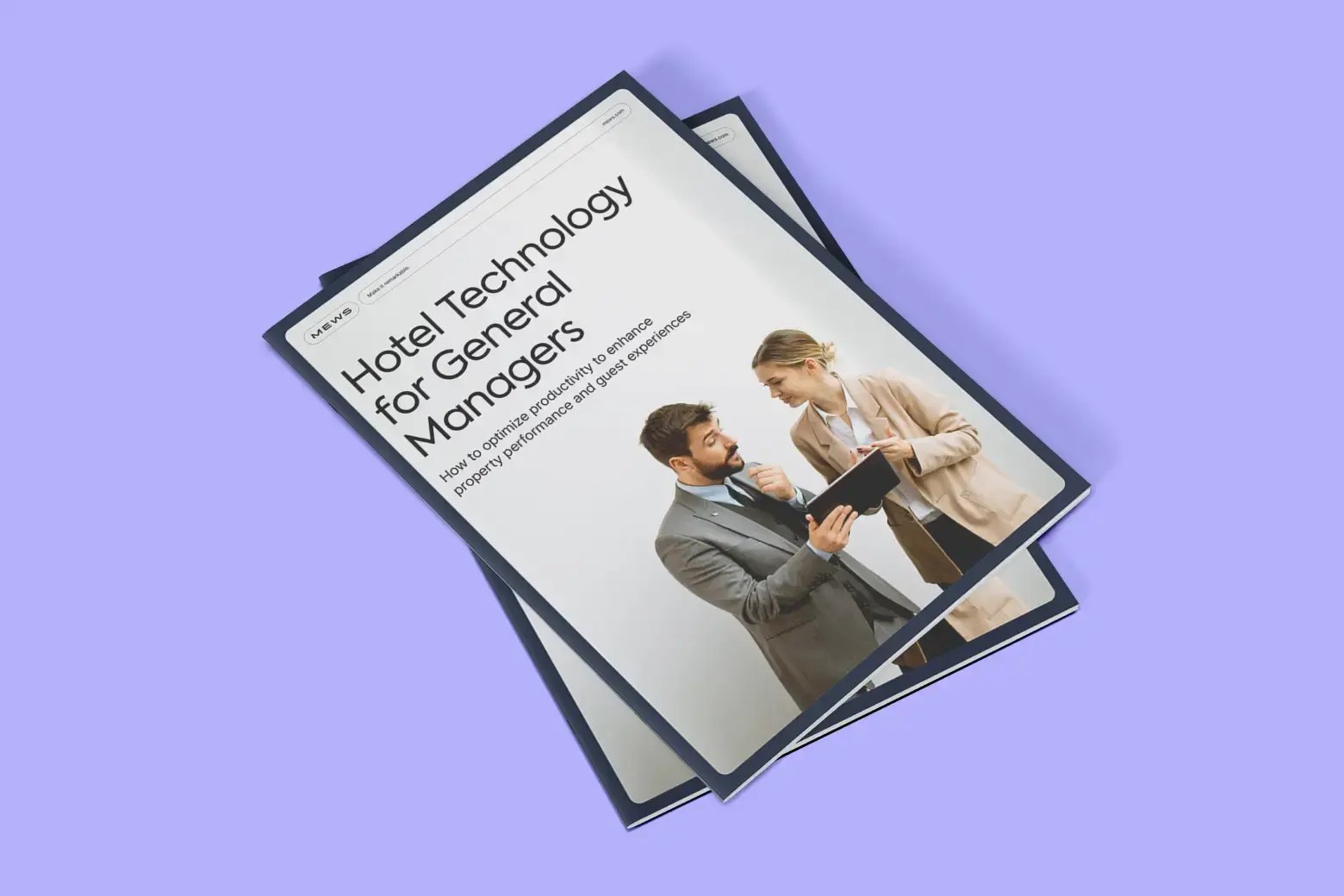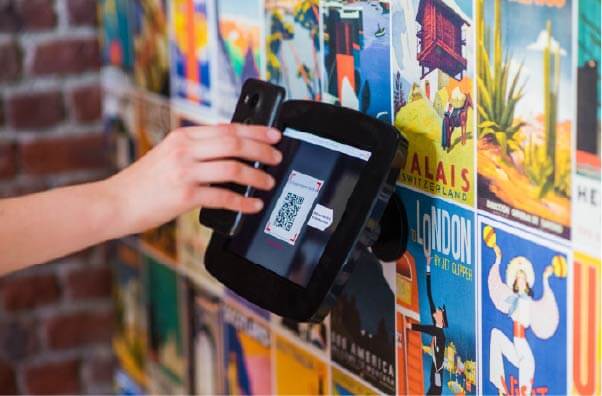You may be wondering what a self-service kiosk is and how it can benefit your hotel. A self-service kiosk, as its name implies, is a way for guests to take control of their hotel experience, allowing them to manage reservations as well as check-ins and check-outs from an interactive computer terminal.
This terminal is designed to reduce the pressure on the front desk by shortening wait times and allowing your hotel to offer a streamlined experience from the moment guests arrive. Reduced wait times lead to increased customer satisfaction and happier front desk staff. In this article we will look more in detail at kiosks, why your hotel needs them and some important things to keep in mind when implementing them.
Table of contents
What is a self-service kiosk for hotels?
A self-service kiosk for hotels is a computer terminal that provides flexibility for both your hotel and your guests. You can install the terminal in your lobby, using it as an alternative or as added support for your front desk staff. The terminals are easy to set up and offer all kinds of functionalities.
Functionalities may include the ability to check in and check out, cut a room key, make payments and scan documents, as well as complete and sign registration cards. It is essentially an auxiliary to your concierge or front desk staff when they are too busy or during off-hours.
However, it should be noted that a self-service terminal does not replace real human interaction; kiosks will help expedite processes, but your staff are still the core of your operation. The service your front desk staff provide will help set you apart from the competition. Read more about how to improve front desk operations.
Why do you need a self-service kiosk in your hotel?
A self-service kiosk or a check in kiosk for hotels is a way of simplifying the whole check-in and check-out process. Kiosks not only provide simplified operations, but they are also contactless, so guests can scan their own documents, complete and sign registration details, and can cut their own keys without any supervision necessary.
If you choose a kiosk from a provider like Mews, you can have the chance to integrate directly with your operations tool (like Mews Operations), streamlining the whole process even further. Guests can arrive at any time of day or night without needing someone present to help them. Plus, for those checking out in a hurry, they can skip the lines and enjoy a fully connected experience.
A self-service kiosk is a great tool to improve guest and front desk staff satisfaction levels. Shorter lines take the pressure off your front desk staff and allow them more space to provide the top-notch service that guests have come to expect. Plus, it provides a connected experience which catapults your hotel ahead of the competition with the help of simple technology.
Find out more benefits of the self-service kiosk.
Things to consider when using a self-service kiosk
Now that we’ve looked at what kiosks are and how they can benefit your hotel, let’s also take a look at a few important points worth considering.
Kiosks should not replace people
Yes, kiosks will help reduce wait times, make lines shorter and allow you to attend to more people at once, but generally, a terminal shouldn’t be a direct replacement for a staff member. Your staff are the heart and soul of your operations, and it’s important that the technology you use in your hotel helps complement their ability to add a special, personable touch.
In a way that machines can’t, employees can help troubleshoot issues that arise, locate bookings that cannot be found, reassure clients, take care of upgrades, and answer questions. The terminals can be used to make the life of your staff easier, especially during the rush of check-in and check-out times, but ultimately the benefits of having real humans helping your clients are unparalleled.
The data gathered is key for driving revenue
One of the main benefits of a kiosk is that you can optimize processes and ensure that important data is stored and gathered so that repeat guests are already stored in the system, making them feel like VIPs when they arrive. Furthermore, machine learning can help understand their preferences, which allows you to better target promotions and upgrades.
It’s a lot easier to upsell and cross-sell based on the guest’s past purchasing habits, especially when the information is localized in one system. You can also allow guests to book other services like a spa, or check out the local attractions, which will boost ancillary revenue.
Put the experience in the hands of your guests
One of the key ways to increase guest satisfaction levels is to put them in charge of their own experience. Giving guests options like letting them decide when to check in and to be able to check out without having to worry that they will miss their plane due to long wait times helps alleviate extra stress that can come from excessive planning. The goal should be to make the experience as smooth and worry-free as possible.
When woven together with technology, you can create a connected experience that improves the overall interaction with your brand by making operations smoother. Guests want to feel free and for things to be easy, and a kiosk is perhaps one of the easiest ways to ensure that that is exactly how they feel when they stay with you.
Branding is important
You can control how your front desk staff dresses and presents themselves as a reflection of your brand identity, and with a terminal it should be no different. Make sure your kiosk is branded and that once you’ve defined your primary language and brand colors, that this is also reflected in your kiosk. Essentially, it should be easily recognizable as an extension of your brand, just like your front desk staff.
Conclusion
In this article we’ve looked in detail at self-service kiosks, what they are, why they are good for your hotel, and some considerations to keep in mind when implementing them in your hotel operations. When used correctly, they can improve the experience for both guests and for your front desk staff by reducing wait times and ensuring the smoothest and hassle-free experience possible.
They can even be used to drive revenue and boost retention rates. Thanks to the data collected, you can better personalize your offers so that guests are more likely to purchase extra services. Once the guests are through the door, your focus should be on providing the best service possible while at the same time optimizing the average spent per booking.

Author
Eva Lacalle
Eva has over a decade of international experience in marketing, communication, events and digital marketing. When she's not at work, she's probably surfing, dancing, or exploring the world.

Essential hotel technology for general managers
Download now
Hospitality hot takes straight to your inbox


.webp)